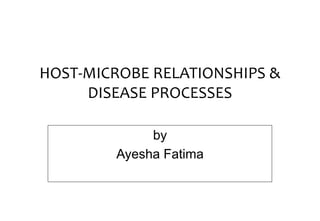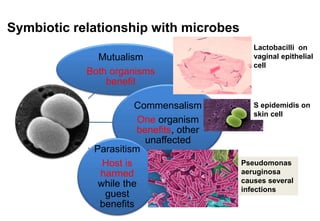This document provides an overview of host-microbe relationships and disease processes. It defines key terminology related to pathology, infection, disease transmission, and clinical microbiology. It discusses Koch's postulates for establishing disease causation, different types of host-microbe interactions, and factors that influence disease patterns and spread. The document also outlines methods for isolating clinical samples, performing antimicrobial sensitivity testing, and interpreting minimum inhibitory concentration results.









































